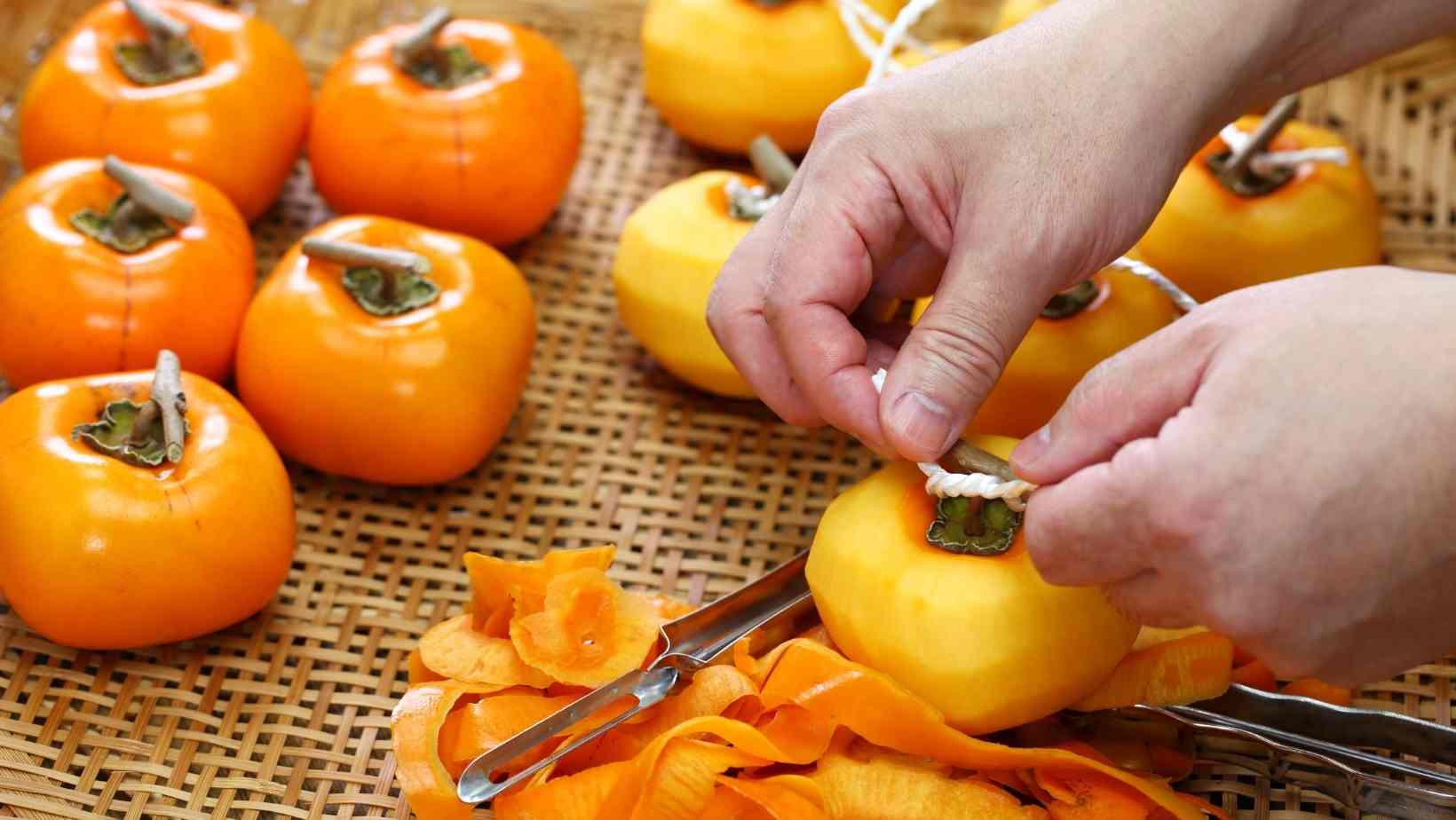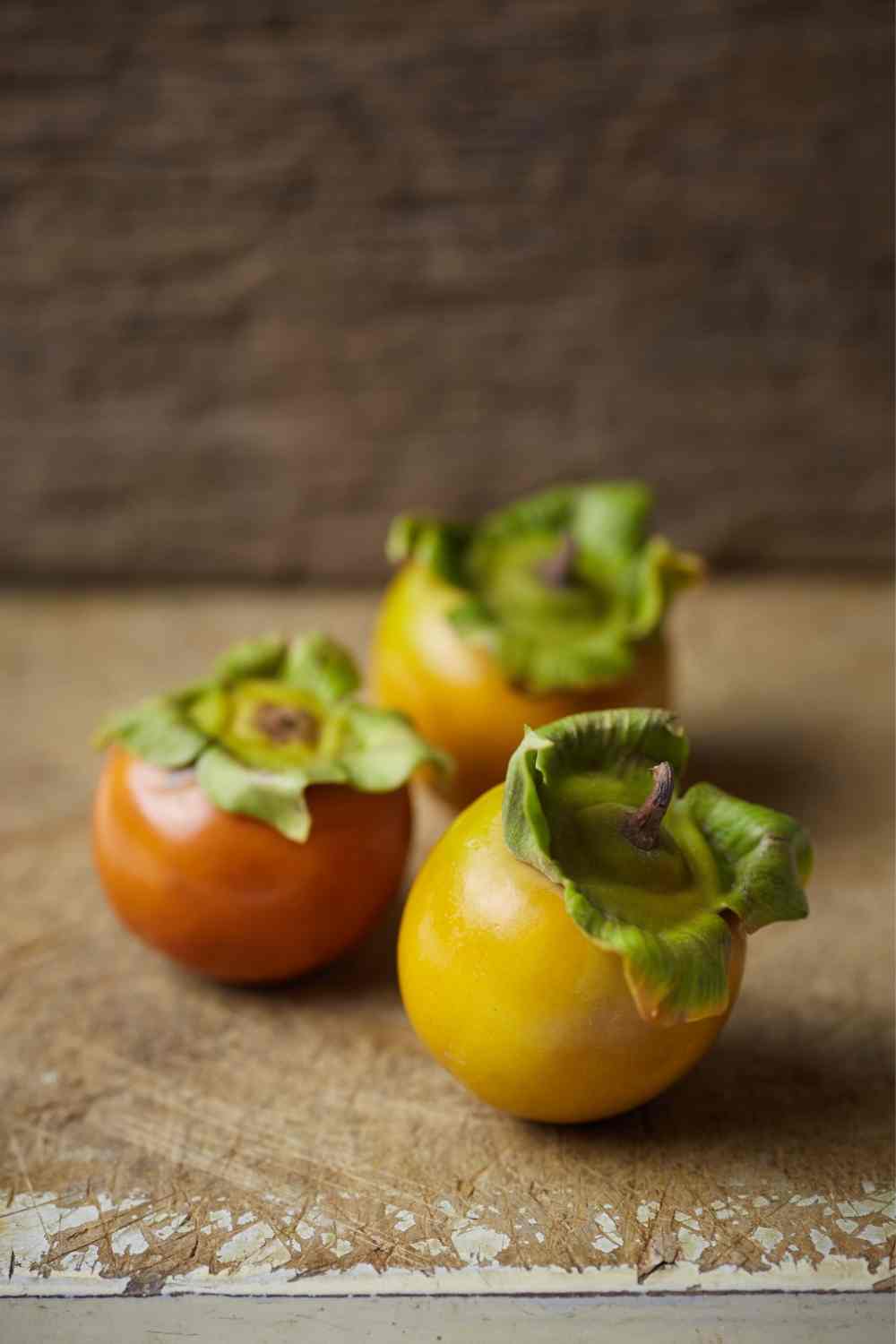What do persimmons, apples, and pears have in common? All of these fruits are from the fall season! Unfortunately, the humble persimmon does not receive the attention it deserves. Don't pass up the opportunity to indulge in some deliciously ripe persimmons if you see them at your local farmers' market or supermarket.
Are you stumped as to where to begin? You'll discover everything you need to know about persimmons, including how to eat persimmon, prepare with, and preserve them, right here.

What Is a Persimmon, Exactly?
Persimmons are a sort of autumn fruit that is usually available from September through December. They feature a yellow-orange flesh, a delicate jelly-like texture, and a tomato-like form when fully mature. The hue of their exterior can range from mild yellow to a rich red-orange.
Although these autumn fruits are native to China, they are also produced in Japan, South Korea, Brazil, Spain, and the United States (most commonly in California). When you bite into a ripe persimmon, you'll notice that it has a sweet, honey-like flavor that reminds you of an apricot. It boasts twice as much fiber as an apple, which you would not expect.
However, not all persimmons are alike. In fact, if you bite into an unripe, astringent persimmon (rather than a sweet persimmon), you'll probably recoil from the bitter taste. Before you go to the market, learn the difference between the two most prevalent types of persimmons: Fuyus and Hachiyas.
Persimmons: How to Eat Them
Now for the main question: how do you consume this delicious fruit? There's no one-size-fits-all approach. Persimmons are a tasty fruit that can be eaten raw or cooked, sweet or savory.
How to Eat Persimmons Raw
You should utilize a sweet (Fuyu) persimmon while it is still pretty firm. Rinse them thoroughly before removing the leaves and slicing them like an apple. Take a bite of the skin, it's edible!
Simply cut into your persimmon and consume the custard-like flesh with a spoon if you prefer to wait until it is riper (which you should always do when dealing with Hachiyas).
Recipes for Sweet Persimmons
After all, persimmons are a sort of fruit, therefore sweet recipes are where they really shine. Persimmons that are ripe are excellent for baking bars, puddings, and even cookies!
Persimmons, of course, make fantastic jams and jellies. To soften into a thick jam, use either very ripe Hachyias or sweet Fuyus, like in the Persimmon Jam recipe.
Recipes for Savory Persimmons
All of your savory dishes will benefit from the sweetness of persimmons. Use them to top off focaccia flatbread for a sweet and savory appetizer. Puree them in soups, slice firm Fuyus for salads, or use them to top off focaccia flatbread for a sweet and savory appetizer.
Persimmons come in a variety of shapes and sizes.
Commercial persimmons are readily available in the United States in two varieties:
Fuyus and Hachiyas
Fuyus, also known as sweet or non-astringent persimmons, have solid flesh and are mildly sweet. They have a flat bottom and a squat, tomato-like form.
Fuyus, unlike their astringent siblings, are safe to consume while still firm, like an apple. You can eat them raw or use them in sweet and savory dishes.
Bitter or astringent persimmons, also known as hakiyas, should not be consumed until they are fully ripe. Hachiyas have an almost inedible, gritty taste before they reach optimum ripeness.

Allow Hachiyas to ripen until they're about to explode to avoid this unpleasant surprise. This guarantees that the tannins have disappeared, leaving you with a sweet, smooth persimmon.
Look for fruit with a long shape that tapers off at the bottom, similar to an acorn, to identify a Hachiya persimmon.
Persimmons for Sale
Beginning in late July and continuing through December, persimmons can be found at farmers' markets and supermarkets. For the best assortment of persimmons, go to your local Asian grocery.
Avoid bruised, ruptured, or asymmetrical persimmons while purchasing. When testing for ripeness, keep in mind the type of persimmon you're working with. Green persimmons should be avoided at all costs because they are always astringent.
Persimmons: How to Store Them
Fuyus should be kept in the fridge to extend their shelf life, as they should be ripe when you get them home. They'll last several weeks in this location.
Hachiyas, on the other hand, should be let to soften (and sweeten) at room temperature. You may always store them near other fruits that emit ethylene gas, such as bananas, to speed up the ripening process. When they've achieved full ripeness, eat them right away or put them in the fridge to keep for up to three weeks.
Persimmon purée is frequently used in baking recipes. This is simply ripe persimmon flesh that has been pureed in a blender or food processor. Transfer persimmon puree to an airtight jar and freeze for up to six months to have on hand for all your fall baking endeavors. Persimmon flesh can also be frozen in cubes or slices by flash freezing it on a baking sheet and then transferring it to an airtight container.




